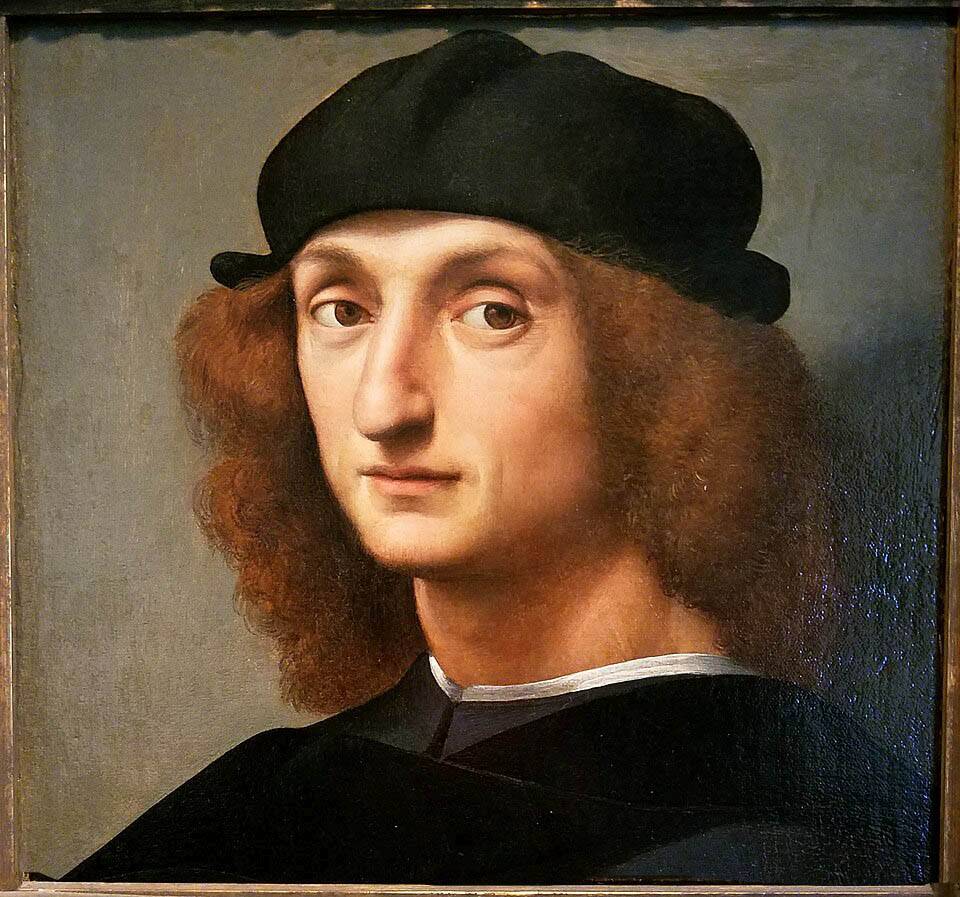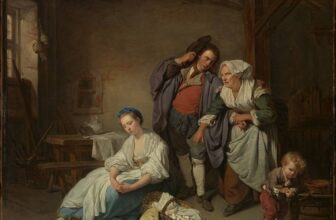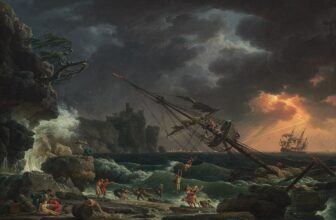
Why Raphael Was Called the Prince of Painters
In the grand narrative of Renaissance art, three names shine above all others: Leonardo da Vinci, Michelangelo Buonarroti, and Raffaello Sanzio da Urbino, better known simply as Raphael. Among them, Raphael is often referred to as “The Prince of Painters”, a title that highlights his unique blend of elegance, grace, and technical mastery. But why exactly did Raphael earn this distinction? What qualities set him apart from his contemporaries, and why does his legacy still resonate across centuries?
This comprehensive guide explores why Raphael was called the Prince of Painters, examining his artistic style, influences, masterpieces, reputation among peers, and enduring impact on art history.
The Renaissance Context
To understand Raphael’s title, one must first look at the Italian Renaissance, a cultural movement spanning the 14th to the 16th centuries. It was an age of rediscovery, inspired by classical antiquity and fueled by humanism. Artists sought not only to depict the world realistically but also to capture the spiritual essence and ideal beauty.
While Leonardo da Vinci was known as the “Universal Genius” for his intellectual curiosity and Michelangelo for his intense power and sculptural mastery, Raphael stood out for his balance, harmony, and grace. His works embodied the perfect synthesis of naturalism and idealism, qualities that made him beloved in his own time and beyond.
Why Raphael Was Called the Prince of Painters
1. His Exceptional Talent and Natural Gift
Raphael was born in Urbino in 1483, the son of court painter Giovanni Santi. From a young age, he displayed extraordinary talent. Unlike Michelangelo, whose art carried drama and tension, or Leonardo, who infused mystery into his works, Raphael possessed a natural gift for clarity, harmony, and elegance. His brush seemed to move effortlessly, creating works that combined technical precision with spiritual serenity.
Contemporaries marveled at how easily Raphael mastered perspective, anatomy, and color. The art historian Giorgio Vasari, in Lives of the Artists, praised Raphael as an artist whose works radiated beauty and charm, making him the “Prince” among painters.
2. His Graceful Style and Harmony
One of Raphael’s defining qualities was his graceful style. His paintings demonstrated perfect proportion, balanced composition, and harmonious use of color. Whether painting religious altarpieces, portraits, or monumental frescoes, Raphael infused each work with poise and dignity.
His figures were never overly dramatic or strained; instead, they carried an inner calm that reflected Renaissance ideals of beauty. This sense of equilibrium distinguished Raphael from his peers.
3. Mastery of Perspective and Composition
Raphael was a master of linear perspective and spatial arrangement. His ability to guide the viewer’s eye naturally through a painting made his works not only aesthetically pleasing but also intellectually engaging.
For example, in The School of Athens (1511), Raphael created a vast architectural space inspired by classical Rome, filled with philosophers and scholars. The composition flows seamlessly, drawing the viewer into the dialogue of great minds. This painting alone cemented his reputation as a supreme organizer of space and ideas.
4. His Charm and Character
Raphael’s reputation was not based solely on his art. He was also admired for his personality. Unlike the often-temperamental Michelangelo or the elusive Leonardo, Raphael was known as gracious, kind, and approachable. He maintained good relations with patrons, fellow artists, and intellectuals.
This personal charm contributed to his nickname, as he was seen not only as a master artist but also as a noble character – princely in demeanor as well as talent.
5. Recognition in His Own Time
Raphael achieved success at a remarkably young age. By his early twenties, he had already painted the celebrated Madonnas, including the Sistine Madonna (1512), whose ethereal beauty became one of the most iconic images of Christian art.
His appointment by Pope Julius II to paint the Stanze di Raffaello (Raphael Rooms) in the Vatican Palace further elevated his status. These frescoes – including The School of Athens, The Parnassus, and The Disputa – showcased Raphael as the ultimate Renaissance painter, capable of uniting philosophy, theology, poetry, and law into monumental visual narratives.
6. The “Prince” Among Michelangelo and Leonardo
In many ways, Raphael was considered the “prince” between two giants – Leonardo and Michelangelo. He absorbed Leonardo’s sfumato technique and anatomical precision, while learning monumentality and sculptural form from Michelangelo. Yet, Raphael surpassed imitation, creating his own unique synthesis of grace and grandeur.
This ability to blend the strengths of his rivals while softening their intensity gave Raphael a distinct identity as the ideal Renaissance artist, thus earning his princely title.
7. His Impact on Future Generations
Raphael’s influence extended far beyond his short life (he died in 1520 at the age of 37). His pupils and followers, known as the Raphaelites, spread his style across Italy and Europe.
For centuries, his works were regarded as the standard of artistic perfection. Even during the Neoclassical period of the 18th century, artists such as Jacques-Louis David revered Raphael’s clarity and balance.
The 19th-century Pre-Raphaelites in England took their name by claiming to reject the overly polished academic art that followed Raphael, yet ironically they confirmed his towering presence in art history.
In Summary
Raphael was called the Prince of Painters because of his grace, harmony, and elegance in painting.
His masterpieces, such as The School of Athens, Sistine Madonna, and The Transfiguration, demonstrate his princely qualities.
Unlike Michelangelo’s power or Leonardo’s mystery, Raphael’s style was balanced, serene, and universally admired.
His personality, charm, and relationships with patrons also contributed to his reputation.
Raphael’s influence shaped European art for centuries, solidifying his legacy as the epitome of Renaissance ideals.
Raphael’s Most Famous Works and Their “Princely” Qualities
The School of Athens (1511)
Location: Vatican, Apostolic Palace
Significance: A masterpiece of perspective and intellectual symbolism, gathering Plato, Aristotle, and ancient philosophers in a majestic architectural space.
Princely Quality: Harmonious composition reflecting the ideal of intellectual nobility.
Sistine Madonna (1512)
Location: Gemäldegalerie Alte Meister, Dresden
Significance: Famous for its serene Madonna and two cherubic angels at the bottom.
Princely Quality: Combines divine grace with human tenderness, embodying Raphael’s elegance.
The Transfiguration (1520)
Location: Vatican Museums
Significance: Raphael’s final painting, combining two biblical episodes with dramatic contrasts of light and shadow.
Princely Quality: Showcases Raphael’s maturity in uniting spirituality and realism, leaving a profound legacy.
Madonna of the Goldfinch (1506)
Location: Uffizi Gallery, Florence
Significance: Depicts the Virgin Mary with Child Jesus and John the Baptist.
Princely Quality: Gentle harmony and maternal warmth, symbolizing Raphael’s gift for human emotion.
Raphael’s Legacy as the Prince of Painters
Elevating the Role of the Artist
Raphael helped elevate the status of artists from craftsmen to intellectuals. His presence in papal Rome, surrounded by scholars and theologians, placed him at the center of cultural power.
Bridging Naturalism and Idealism
He struck the perfect balance between natural observation and idealized beauty, a hallmark of Renaissance art.
Universal Appeal
While Michelangelo’s intensity or Leonardo’s enigmatic works could divide opinion, Raphael’s art appealed to a wide audience. His balance, serenity, and charm made him universally beloved – qualities befitting a “prince.”
Raphael’s title as the Prince of Painters was not simply a poetic compliment. It reflected his unmatched ability to embody the Renaissance pursuit of beauty, harmony, and intellectual depth. While Leonardo da Vinci dazzled with invention and Michelangelo astonished with power, Raphael charmed with grace, elegance, and humanity.
Even five centuries after his death, Raphael remains a symbol of what painting can achieve when technical mastery meets ideal beauty. His works continue to attract art lovers, scholars, and collectors worldwide, proving that the “Prince of Painters” still reigns in the hearts of those who value the timeless ideals of the Renaissance.




